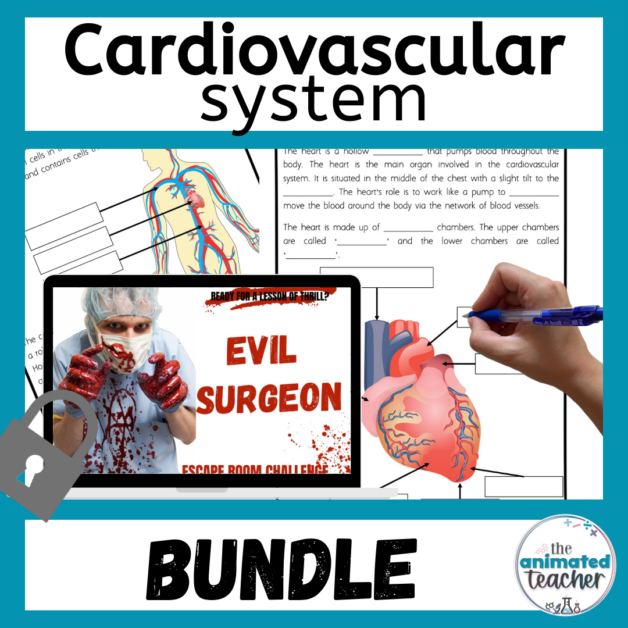How to differentiate professional development for teachers
In our world of differentiating learning opportunities for students, it can often seem like an afterthought to differentiate professional development for teachers. For all the good intentions and hours of preparation that educational leaders dedicate to preparing and delivering professional development for their colleagues, the value is diminished due to the lack of differentiation. As an experienced high school Chemistry teacher, I have very little in common with a beginning Kindergarten teacher, and yet, I’ve often found myself listening to the same presentation.
What if there is a better way? A way to provide professional development that is engaging and accessible to all teachers while also modelling best practice? There is!
So, grab a coffee and sit back and relax while I give you 11 ways to differentiate professional development opportunities for teachers that they will appreciate.

Disclaimer: This blog post may contain affiliate links. This means I may receive a small commission on qualifying purchases. This is of no extra cost to you and it helps me to continue writing awesome content for you! Read full disclaimer here.
Need a recap on differentiation?
According to Carol Ann Tomlinson (2010), differentiation involves the proactive planning of learning opportunities to ensure the learning is accessible to all. In an educational professional development setting it often feels as though there isn’t a lot of actual learning happening. Why? Because not enough proactive planning has gone into finding out where teachers are at and how they would engage best.
So, what does this mean for professional development opportunities?
Differentiation can be done in four main ways: differentiating the content, product, process or environment.
- Content refers to meeting teachers where they are at and allowing differing entry levels.
- Product refers to the end result you want from your staff.
- Process refers to how teachers learn or engage with the content.
- Environment is where the learning is taking place.
See my blog post ‘53 EASY differentiation strategies for the classroom’ for a more extensive explanation.
Here is a list of 11 easy ways to differentiate professional development for teachers that looks at different options for the above categories of differentiation.

How to differentiate professional development for teachers
1. Survey staff in the planning stage
If you want teachers to ‘buy in’ to the professional development then they also need to feel heard. Survey your staff to find out what topics or areas they are seeking development or support in. Use this to inform the types of opportunities you offer during professional development. But also be warned – don’t bother surveying the staff if their answers are going to be disregarded.
Here are some ideas for what you could ask your teachers for input:
- What area do they want to develop in? e.g. pedagogy, organisation, assessment task writing, data collection/analysis, new technology, subject area knowledge?
- How would they rate themselves in terms of their own expertise in that particular area? Where would they like to progress to?
- What types and formats of professional development do they enjoy most?
2. Use the expertise of staff in your school
There is a whole wealth of expertise and knowledge found in your school already. Utilise this! Here are a few ways to make the most of the staff expertise within your school:
- Have internal staff run workshops in their area of strength. The benefits of this are twofold: first, colleagues will be able to learn from a peer and get more of an insight into what other teachers are doing in their own classes. Second, the teacher preparing the workshop will have a chance to reflect on their own practice and will benefit from increasing their skill level to present professional development.
- Ask teachers to share ideas from their own classrooms
- Provide opportunity for staff to show new resources they created for their classes
- Encourage staff to share methods they use for their own organisation, data collection, report writing, assessment preparation etc.
- Have heads of faculty run professional development for their own faculty
- Invite teachers who have recently attended conferences or external professional development to share their learnings.
3. Offer stations and choice
Stations offer choice in both the order of the session and which sessions to complete. Some fun ways to do this could be:
- provide a menu of options: staff pick one option from each category such as starters, entree, main and dessert. If you’d like some FREE editable templates enter your email here and I will send them to you!
- play bingo: set up a bingo board with the different PD options and throughout the day staff complete 4 in a row / column / diagonally.



4. Offer choice in who they work with
Give teachers the option to choose who they work with throughout the session. This could be individually, with a partner, within faculty groups or across subject areas. It is important that teachers have the opportunity to work in a way that suits them and the opportunity to collaborate with people who they connect with.
5. Provide levels of professional development
Part of differentiation is ensuring the needs of the learner are met and that the learning takes into account their current level of expertise. For example, if a session was to be run on differentiation, allow for different entry levels:
- Novice / beginning teacher – provide an introduction and basic concepts
- Competent – choose a resource to work on to turn into a differentiated lesson
- Proficient – choose a program to work on incorporating multiple strategies to work on
- Expert – give your most experienced and confident teachers the opportunity to share their expertise.
6. Offer choice in location
The environment in which the learning takes place can also be differentiated. This can be as simple as allowing teachers to choose their own seating arrangement, or setting up the different learning options in various locations. Have you ever considered running some PD in a cafe or outside rather than inside?

7. Use lesson observations
Lesson observations – where teachers go and observe a colleagues lesson – is an excellent opportunity for professional development. Allow them choice as to which teachers / subject / year level they want to observe!
8. Differentiate the product
Often we want to see some kind of product or reflection following professional development. Allow teachers to create or reflect in a way that makes sense to them. A teacher could reflect using voice recording, a mind map, a short video, a picture, flowchart, or collage of images. Don’t insist on every teacher filling out the exact same Google form.
9. Use a jigsaw model
The jigsaw model requires two different groupings. First, teachers split into small groups where they learn about a particular strategy / resource / topic and become the ‘experts’ in that area. Then they form a second group which has one ‘expert’ from different original groups. Each teacher takes turns in sharing / teaching the group about their expert strategy. This includes differentiation as teachers can choose the area they would like to become the expert in and also choose how they present this information back to their group. You can read more about this strategy here.
10. Offer multi-modal options
With so many resources and technologies available at our fingertips it always surprises me that these options aren’t often utilised during professional development. Sure the odd funny video is shown at the start to ‘engage’ the audience, but that’s about it. Why not give teachers the choice as to how to receive the information? Provide a range of options such as videos, podcasts, webinars, journal articles, books. You don’t need to create all of them – just find them!
11. Utilise subject / grade specific professional development opportunities
I’m going to say it… There is very little value in whole staff professional development. Why? Because we all teach in a niche area. Whether it be the subject area or the grade level. While there are some opportunities for whole staff professional development, most would be more effective if it was focussed on a teachers’ specific grade or subject. For example, Science teachers and PDHPE teachers may benefit from sessions on ‘how to maintain control amidst the chaos’ (seriously!) while English and Mathematics teachers may benefit more from a session on ‘how to deal with overzealous parents’.
In addition to this, it is also important to provide teachers with professional development that extends their knowledge in their subject specific area. It is important that teachers remain experts in their subject. Unfortunately, the demands of the profession mean that teachers are left with no time to spend staying up to date with current information unless educational leaders make it a priority to include it in professional development days.
Conclusion
Differentiation is just as important for teachers as it is for students if we want to give them the best opportunities to develop professionally and enjoy it! Differentiating professional development for teachers is essential if you want your staff to feel valued and to develop in their teaching practice.
Which of these methods are you implementing in your upcoming professional development?
Do you have any other strategies? Comment below!
Written by Katrina
4 Comments
4 Comments
Trackbacks/Pingbacks
- 53 EASY Differentiation Strategies for Your Classroom - […] That’s where this post comes in! I’ve created a list of 53 differentiation strategies that are easy to implement…







Awesome ideas. Thank you Mam.
Great blog for teachers……thank you.
This is such an excellent blog with some really useful ideas. Very inspiring!
Thank you so much Justine! That means so much to me. If you have any ideas for topics you would like to hear about let me know!